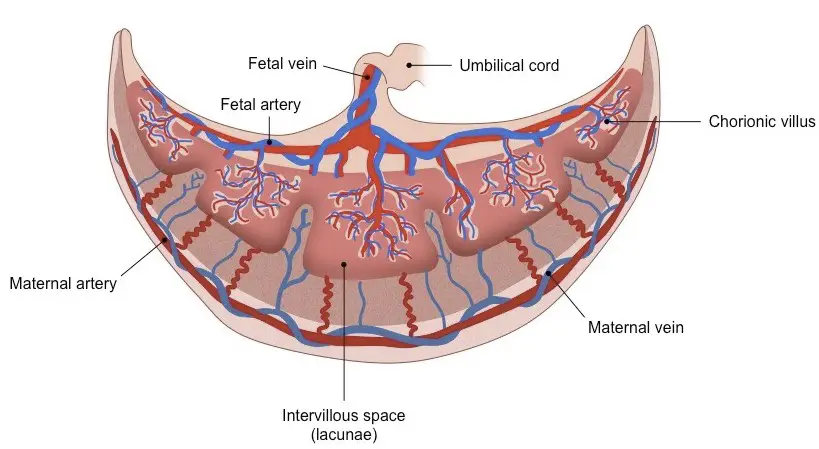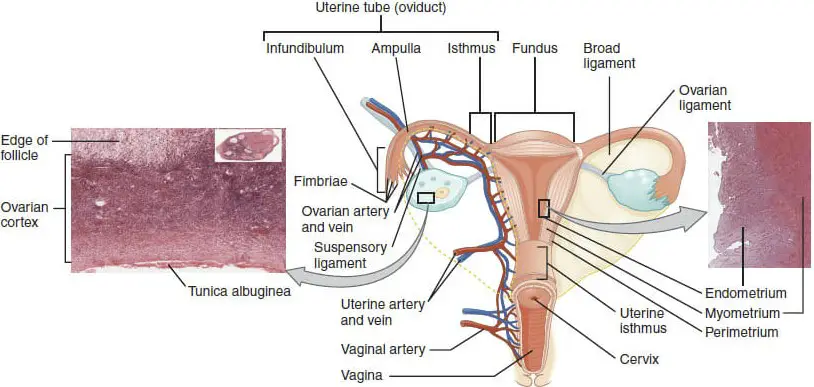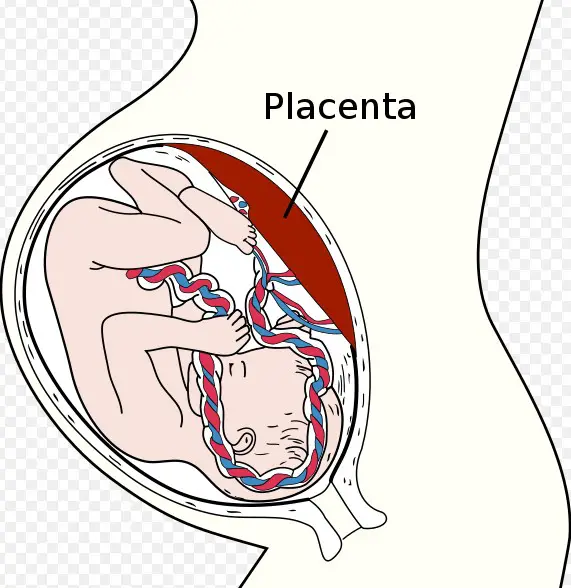The placenta and uterus are two vital organs in the female reproductive system, especially during pregnancy. Each plays a crucial role in supporting and nurturing life from conception to birth. While often mentioned in the same breath when discussing pregnancy, their functions, structures, and roles within the reproductive process are distinctly different.
The placenta is a temporary organ that develops in the uterus during pregnancy, providing oxygen and nutrients to the growing fetus while removing waste products from the fetus’s blood. The uterus, on the other hand, is a permanent part of the female reproductive system, serving as the home for the developing fetus during pregnancy. It expands and adapts to accommodate the growing life within, while also playing a significant role in the birthing process.
Understanding the difference between the placenta and uterus sheds light on their indispensable roles in pregnancy. The placenta acts as a lifeline to the fetus, supplying essential nutrients and oxygen, while the uterus provides a safe and nurturing environment for fetal development. These organs work in concert to ensure a successful pregnancy and the health of both mother and child.

Placenta Basics
Definition and Function
The placenta is a unique and temporary organ that forms within the uterus during pregnancy. Its primary role is to nourish, support, and protect the developing fetus. Acting as a critical bridge between the mother and fetus, the placenta facilitates the exchange of oxygen, nutrients, and waste via the umbilical cord.
- Oxygen and Nutrients: The placenta pulls these from the mother’s bloodstream and transfers them to the fetus.
- Waste Removal: It also collects waste products from fetal blood for elimination by the mother’s body.
- Hormonal Support: Produces hormones to maintain the pregnancy and support fetal development.
Formation and Lifecycle
The formation of the placenta begins shortly after the fertilized egg attaches to the wall of the uterus. This process, crucial for a successful pregnancy, unfolds through several stages:
- Implantation: The embryo embeds itself into the uterine wall, where placental cells start to form.
- Early Growth: Placental cells rapidly divide, creating the placenta and umbilical cord.
- Maturation: The placenta continues to grow and evolve, fully forming by week 12 of pregnancy.
- Function Throughout Pregnancy: It remains active, providing support until birth.
- Delivery: Shortly after the baby is born, the placenta is expelled, marking the end of its lifecycle.
Uterus Basics
Definition and Role
The uterus, a key organ in the female reproductive system, is where fetal development occurs. Its roles include:
- Supporting Implantation: Provides a site for the embryo to attach and grow.
- Sheltering the Fetus: Houses the developing fetus during pregnancy.
- Facilitating Birth: Contracts during labor to help deliver the baby.
Anatomy and Physiology
The structure of the uterus is designed to support reproductive processes. It includes:
- Layers: The inner lining (endometrium), muscular middle layer (myometrium), and outer layer.
- Changes During Pregnancy: To accommodate a growing fetus, the uterus undergoes significant changes:
- Expansion: Increases in size to provide space for the fetus.
- Blood Supply Enhancement: Develops additional blood vessels to supply the placenta and fetus with nutrients.
- Muscle Strengthening: Prepares for the labor process.
Key Differences
Structural Differences
The placenta and uterus differ notably in their structure and location within the reproductive system.
- Placenta: A temporary organ attached to the lining of the uterus, connecting to the fetus via the umbilical cord.
- Uterus: A permanent, muscular organ located in the female pelvis, designed to house and support the fetus throughout pregnancy.
Functional Roles
Though both critical for pregnancy, the placenta and uterus serve distinct functions.
- Placenta:
- Acts as a filter and exchange system between mother and fetus.
- Produces hormones to support pregnancy.
- Uterus:
- Provides a protective environment for the developing fetus.
- Facilitates the labor and delivery process.

Interactions During Pregnancy
Placenta and Uterus Coordination
The placenta and uterus work in harmony to create a conducive environment for fetal development. This partnership is vital for a healthy pregnancy. The placenta attaches to the uterine wall, where it performs critical functions like nutrient delivery and waste removal. The uterus, meanwhile, adapts to the growing fetus by expanding and ensuring a secure attachment site for the placenta.
- Nutrient Supply: The uterus enhances blood flow to the placenta, which then transports nutrients to the fetus.
- Waste Elimination: The placenta filters waste products from the fetus’s blood, which are then removed by the mother’s body.
- Protection and Support: Together, they protect and support the fetus, providing a safe space for growth and development.
Hormonal Interactions
Hormones play a central role in regulating the relationship between the placenta and uterus. The placenta produces hormones like hCG (human chorionic gonadotropin) and progesterone, which are crucial for maintaining pregnancy and preparing the uterus for fetal development.
- hCG signals the body to maintain the endometrium, supporting the pregnancy in its early stages.
- Progesterone helps maintain a healthy uterine lining, reducing contractions that could threaten pregnancy.
These hormonal signals ensure the uterus remains a nurturing environment throughout the pregnancy.
Complications and Conditions
Placental Complications
Placental complications can pose significant risks during pregnancy. Two common issues include:
- Placenta Previa: Occurs when the placenta covers part or all of the cervix, potentially causing severe bleeding during pregnancy and delivery.
- Placental Abruption: This happens when the placenta detaches from the uterine wall before delivery, endangering both mother and fetus due to the loss of oxygen and nutrients.
Both conditions require immediate medical attention to manage the risks and ensure the safety of mother and child.
Uterine Conditions
Conditions affecting the uterus can also impact pregnancy outcomes. Examples include:
- Fibroids: Non-cancerous growths in the uterine wall that can cause pain, bleeding, and complications during pregnancy.
- Uterine Anomalies: Abnormalities in the shape or structure of the uterus, which may increase the risk of miscarriage, preterm birth, and complications during delivery.
Early diagnosis and management of these conditions are essential for a healthy pregnancy.
Clinical Importance
Monitoring and Diagnosis
Regular monitoring and early diagnosis play critical roles in managing the health of the placenta and uterus during pregnancy. Techniques include:
- Ultrasound: Provides detailed images of the uterus and placenta, helping detect anomalies and monitor fetal development.
- Blood Tests: Assess hormone levels and other indicators of placental function.
- Physical Exams: Regular check-ups to assess uterine growth and detect potential complications.
These diagnostic tools are vital for identifying issues early and formulating effective management strategies.
Treatment and Management
Treatment approaches for complications related to the placenta and uterus are tailored to the specific condition and the stage of pregnancy. They may include:
- Medication: To manage symptoms or conditions such as fibroids or hormonal imbalances.
- Surgery: In some cases, surgical intervention may be necessary to address placental or uterine conditions.
- Close Monitoring: For conditions like placenta previa, careful monitoring and possibly bed rest are recommended to minimize risks.
The goal of treatment is to ensure the health and safety of both the mother and fetus, aiming for a successful pregnancy and delivery.
Frequently Asked Questions
What is the placenta?
The placenta is a temporary organ that forms in the uterus during pregnancy. It functions as a critical life-support system for the developing fetus, facilitating the exchange of oxygen, nutrients, and waste products between the mother and the fetus through the umbilical cord.
How does the uterus change during pregnancy?
During pregnancy, the uterus undergoes significant changes to accommodate the growing fetus. It expands dramatically, increasing in size and weight, and its lining thickens to provide a nurturing environment. The muscular walls of the uterus also strengthen to support the fetus and play a crucial role in labor and delivery.
Can you have a healthy pregnancy with placental or uterine complications?
While placental or uterine complications can pose risks to pregnancy, many women with such conditions still have healthy pregnancies and deliveries. Early diagnosis and careful management by healthcare providers are key to addressing these issues, ensuring the health and safety of both the mother and the fetus.
Why is the placenta important?
The placenta is vital for the fetus’s development, serving as the connection between the mother and the fetus. It supplies the fetus with necessary nutrients and oxygen while removing waste products. The placenta also produces hormones to support pregnancy and protect the fetus from infections.
Conclusion
The placenta and uterus are cornerstone elements in the journey of pregnancy, each with a unique and irreplaceable role. Their functions underscore the complexities and wonders of human reproduction, highlighting the importance of prenatal care and health monitoring. As we learn more about these vital organs, we deepen our appreciation for the intricate processes that support life from its earliest stages.
Understanding the distinct functions and importance of the placenta and uterus not only enhances our knowledge of reproductive health but also emphasizes the marvels of pregnancy. Through this knowledge, we gain insights into the critical care necessary for ensuring the well-being of both mother and child during this transformative period.

